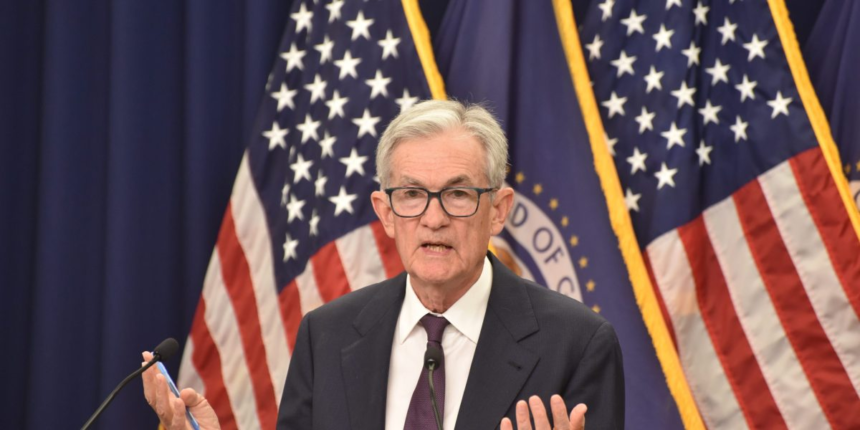Martha Gimbel, a Yale economist and the paper’s lead author, hopes that understanding this data helps people relax. “Take a step back. Take a deep breath,” Gimbel told Fortune. “Try to respond to AI with data, not emotion.”
The new study examined multiple measures of labor market disruption, drawing on Bureau of Labor Statistics data on job losses, spells of unemployment, and shifts in broader occupational composition. The conclusion: There’s movement, but nothing out of the ordinary.
While the mix of occupations has shifted slightly in the past years, the authors stress that this change is still well within historical norms. Right now, the forces driving those shifts appear to be macroeconomic rather than technological.
“The biggest forces hitting the labor market right now are a slowing economy, an aging population, and a decline in immigration—not AI,” Gimbel said.
It’s not surprising, then, that many workers assume AI must already be responsible. But Gimbel argues one of the biggest misconceptions is conflating exposure to AI with displacement. Radiologists illustrate the point. Once seen as automation’s prime victims, they are more numerous and better paid than ever, even as their workflows rely heavily on AI-powered imaging tools.
“Exposure to AI doesn’t mean your job disappears,” she said. “It might mean your work changes.”
The same applies to coders and writers, who dominate AI adoption rates on platforms like Claude, the researchers found. Using the tools doesn’t automatically train away your livelihood—it could simply reshape how the work is done.
Molly Kinder, Gimbel’s coauthor at Brookings, added another layer: geography. Americans are used to thinking about automation as something that devastates factory towns in the heartland. With generative AI, Kinder said, the geography is flipped.
“This is not your grandparents’ automation,” Kinder told Fortune. “Gen AI is more likely to disrupt—positively or negatively—big cities with clusters of knowledge and tech jobs, not the industrial heartland.”
In her view, cities like San Francisco, Boston, and New York, dense with coders, analysts, researchers, and creatives, are far more exposed to generative AI than smaller towns. But whether that exposure turns into devastation or growth depends on the future.
“If humans remain in the loop, those cities could reap the most benefits,” Kinder said. “If not, they’ll feel the worst pain.”
The key, she emphasizes, is that exposure doesn’t tell us whether jobs will actually be eliminated, rather, it only tells us which tasks could change. The real story will depend on whether companies treat AI as a helper or as a replacement.
Kinder, like Gimbel, stressed that diffusion takes time. Even as AI systems improve quickly, most organizations haven’t redesigned their workflows around them.
“Even though it feels like AI is getting so good, turning that into change in the workplace is time-consuming,” she said. “It’s messy. It’s uneven.”
That’s why the Yale-Brookings analysis is deliberately broad. “It can tell if the house is on fire,” Kinder explained. “It can’t pick up a stove fire in the kitchen. And right now, the labor market as a house is not on fire.”
That doesn’t mean there’s nothing to see here, however.
Kinder called today’s changes, like the ones the Stanford study picked up, “lightning strikes” in specific industries like software development, customer service, and creative work. These early jolts serve as canaries in the coal mine. But they haven’t aggregated into the kind of disruption that reshapes official job statistics.
“Our paper does not say there’s been no impact,” she said. “A translator might be out of work, a creative might be struggling, a customer service rep might be displaced. Those are real. But it’s not big enough to add up to the economy-wide apocalypse people imagine.”
Both Kinder and Gimbel said they expect the first clear, systemic effects to take years, not months, to appear.
If and when real displacement arrives, both authors believe it will come from embedded AI in enterprise workflows, not from individual workers casually using chatbots.
“That’s when you’ll see displacement,” Kinder said. “Not when one worker turns to a chatbot, but when the business redesigns the workflow with AI.”
That process is beginning, as more companies integrate AI APIs into core systems. But organizational change is slow.
“Three years is nothing for a general-purpose technology,” Kinder said. “Gen AI has not defied gravity. It takes time to redesign workflows, and it takes time to diffuse across workplaces. It could end up being phenomenally transformative, but it’s not happening overnight.”









